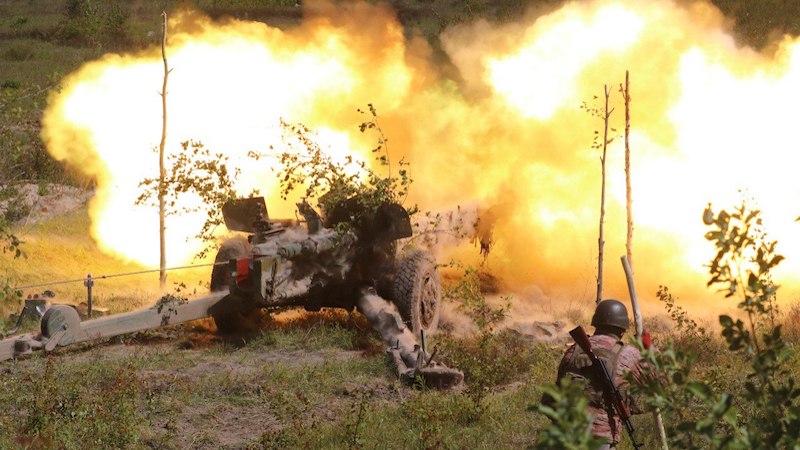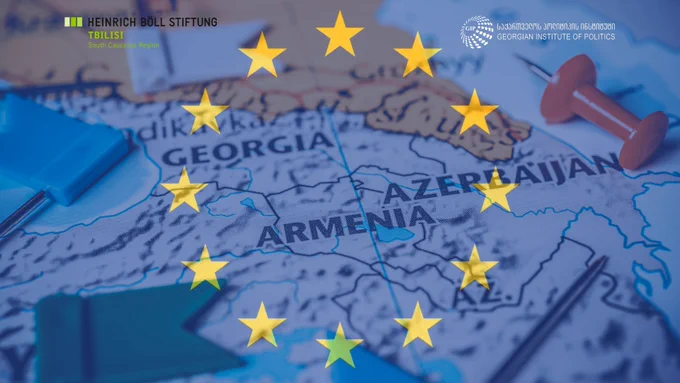
The failure of the Ukrainian 2023 offensive was in large part due to long delays in Western military assistance and the training of new Ukrainian brigades (Espreso, December 27, 2023). This gave Russia about nine months, from October 2022 to June 2023, to build fortifications along three “Surovikin lines,” including deep trenches, covered fighting positions, tank obstacles, and mines with a density of approximately five per square meter (Slovo i Dilo, September 2, 2023; BBC Ukrainian, September 27, 2023).
In particular, the delay in military supplies was caused by a lack of political will in the United States and Germany out of fear of nuclear escalation with Russia (Ukrinform, June 1; 24 Kanal, June 7). The rapid collapse and rout of Russian forces in the Kharkiv direction sparked fears in the Kremlin a Ukrainian breakthrough might south toward the Azov Sea, potentially leading to the collapse of Russia’s occupation in southeast Ukraine (Armiya Inform, September 6, 2023). In those conditions, Moscow’s nuclear threats became the most intense, further enflaming fears of escalation in the West (Holos Ameryky, September 23, 2022).
These developments over the past two years of war shed insight on what Ukraine can expect for the future. The increased interest from the West to provide aid to Ukraine and the continuing failures of the Russian army may open an opportunity for Ukraine to take the initiative in the war.
Since the failed offensive, contact along the frontlines has been roughly static, with large formations unable to break through defensive lines due to constant aerial threats, including an immense number of cheap drones (seeEDM, July 3). A six-month delay on the US Congress aid package prevented the adoption of a $61 billion aid package for Ukraine. During the delay, North Korea sent large quantities of low-quality artillery shells to Russia, a sign that Pyongyang has joined Moscow in its proclaimed wider conflict with the so-called “collective West” (TSN, January 15;Fakty, February 20;Foreign Affairs, April 23).
Russia enjoys several advantages over Ukraine. Russian President Vladimir Putin outlined Russia’s strategy of slow gains in capturing Ukrainian territory, preventing future counteroffensives, and winning a long war of attrition (Kremlin.ru, June 7). Earlier this year, Putin’s spokesperson Dmitry Peskov signaled an official shift from prosecuting the “special military operation” to digging in and preparing for the “long war” (see EDM,October 2, 2023,April 1). What the Kremlin did not disclose, however, was that this shift in rhetoric and military tactics mirrors those used in the Soviet Union, including the wholesale destruction of towns and villages, like Bakhmut and Avdiivka.
Putin believes Russia has greater staying power in this war than Ukraine and the West (Pershyy Zakhidnyy, June 8). This is due in part to the willingness of Russians to accept high numbers of casualties, Russia’s economy has been pushed onto a war footing, and the general popularity of imperial nationalism, especially among ethnic Russians (TSN, May 18). The Kremlin is betting that Western governments, Putin will abandon Ukraine themselves or will do so after Russia persuades them to negotiate a trade of territory for peace.
Much of the Russian population has appeared to demonstrate an ambivalence to the high level of casualties (Teksty, November 6, 2023). According to the UK Ministry of Defense’s intelligence update, concurring with estimates by Ukrainian military intelligence, in May, Russia endured the highest number of casualties since the invasion began with a daily average of 1,200 and reaching a total of half a million (Ukrainian Ministry of Defense, May 25;Ukrinform, May 28Europiyska Pravda, May 31). That may change should Moscow be forced to call for another round of mobilization—this time within the predominantly ethnic Russian city centers (seeEDM, September 18, 2023;Radio Svoboda, June 7). If Russians do continue to accept high casualties and if these losses can then be replaced by a similar number of recruits, Russian forces will likely maintain the initiative on the battlefield.
An unwillingness to launch another round of mobilization, nevertheless, prevents Russia from launching large offensives to capture Ukrainian cities. Russian attempts to capture the strategic Donetsk city of Chasiv Yar have failed, as has the Russian offensive in the Kharkiv direction (Unian, June 5). Russia does not have large reserves of manpower that are required to capture Kharkiv, a city of 1.5 million, let alone Kyiv with 4 million inhabitants (Suspilne Novyny, May 6). Additionally, some Russian units are still reeling from the intense numbers of casualties incurred in the capture of Bakhmut in May 2023 and Avdiivka in February 2024 (Mediazona, June 10).
Two other factors working against the Kremlin are Western sanctions, especially the impact on Russia’s energy exports, and the inability of Moscow’s military-industrial complex to replenish military stocks (see EDM, October 5, 31,December 7, 2023, April3, 29,May 30;Glavkom, May 19). Russian equipment losses have been quite high for the duration of the war—nearly 8,000 tanks, 15,000 armored personnel carriers, 13,500 artillery systems, 700 aircraft and helicopters, and a third of the Black Sea Fleet (including a submarine) have been lost (MinFinMedia, June 10). Russia is drawing on Soviet stocks, but these are finite (seeEDM, March 14).
Ukraine also has several strong points that have prevented a Russian victory. First, Ukraine has a large volunteer movement and resilient civil society (see EDM, March 16,23,April 19, 2022, April18,24;National Institute of Strategic Studies, November 2022). Second, Ukrainians understand the war is existential to their identity, which Russian imperial nationalists seek to destroy. Third, Ukraine’s army is reforming its military to North Atlantic Treaty Organization standards, introducing increased flexibility and a stronger officer corps (Korrespondent, January 31). Fourth, Ukraine has a growing military-industrial sector, both state and private, that has been incredibly innovative, developing cutting-edge naval drones, unmanned land-based vehicles, and drones that can both deliver payloads and shoot down targets (Teksty, April 19).
Ukraine’s remaining weak points are important inhibiters to future offensives. President Volodymyr Zelenskyy delayed building of fortifications along defensive lines and laying mines because it required a psychological adaptation from an offensive to defensive posture. Additionally, Ukraine has a smaller pool of manpower than Russia and delayed mobilization until the adoption of two laws in May (see EDM,10,24; Ukrainian Parliament, May9,18).
Ukraine is reliant on Western financial support of approximately $5 billion per month (Kyiv Post, May 20, 2022;Voice of America, October 2, 2023). The slow delivery of air defense systems to Ukraine has provided Russia with the ability to destroy a large portion of Ukraine’s energy infrastructure, reducing the availability of electricity and leading to black outs (see EDM, June20,27,July 3). This will require additional Western funding to overcome ahead of the winter campaign.
The Kremlin’s long war of attrition proclaims the same goals of “de-militarization” and “de-nazification” of Ukraine and the destruction of Ukrainian identity to opening the way for the creation of a truncated “Little Russia” (Armiya Inform, October 31, 2023; Kuzio,Crimea: Where Russia’s War Started and Where Ukraine Will Win, July 8). Moscow is full aware that a long war is not in Ukraine’s interests as it increases social problems, severely damages children’s education, destroys the economy, and disincentivizes millions of Ukrainian refugees from returning home (Bruegel, September 27, 2022;UNICEF, February 21, 2023;Kyiv School of Economics, October 3, 2023).
Overall, it is in the best interest of Ukraine and the West to end the war quickly and definitely. The unwillingness of some Western countries to declare Ukraine’s ultimate victory and Russia’s complete defeat as their overarching goal, hesitant policies over using Western weapons to hit targets inside Russia, and the drip feed of military assistance have created the conditions for a long war (Unian, May 31).
The theme of 2024 will be a year of Ukraine defending against Russian assaults in Donbas, Kharkiv, and elsewhere. Nevertheless, with new Western and Ukrainian weaponry, including long-range missiles and jets, along with the steady mobilization of more military personnel, Ukraine will be ready to launch a determined offensive in 2025.
- This article was published at The Jamestown Foundation’s Eurasia Daily Monitor Volume: 21 Issue: 103
